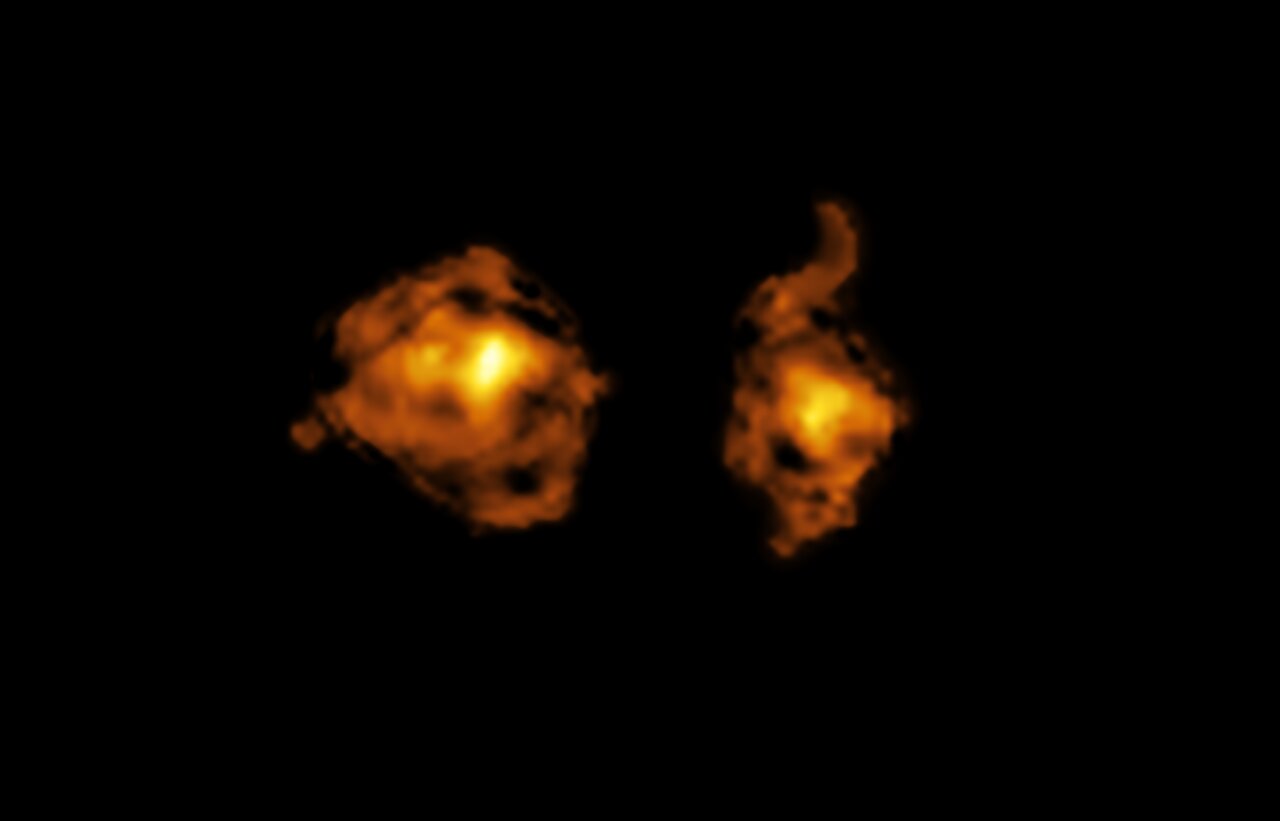Galaxy interactions can be dramatically violent. Minor mergers can cause the smaller galaxies to disappear into the larger ones. Major mergers can change the whole geometry of the galaxies involved, and even flybys are highly disruptive. For the first time ever, researchers have discovered that the interactions don’t even have to involve gravity; galaxies can just blast radiation at each other and mess with their evolution.
The two galaxies are moving around each other at a speed of 500 kilometers (310 miles) per second. They are missing each other so far, but one of them is a quasar, so its supermassive black hole is active and producing jets of radiation. As the two objects passed near each other, the quasar blasted the regular galaxy with radiation, like a glancing blow.
“We hence call this system the ‘cosmic joust’,” study co-lead Pasquier Noterdaeme, a researcher at the Institut d’Astrophysique de Paris, France, and the French-Chilean Laboratory for Astronomy in Chile, said in a statement.
Previous observations made it look like the system was a single object. It is very far away, with its light taking over 11 billion years to reach us. Thanks to the Atacama Large Millimeter Array (ALMA) and the X-shooter instrument on the European Southern Observatory’s Very Large Telescope, the team was able to distinguish the two galaxies. And not just that: The effect of the quasar on its companion has become obvious.

ALMA observations of the cosmic joust.
Image Credit: ALMA (ESO/NAOJ/NRAO)/S. Balashev and P. Noterdaeme et al.
The observations show that the quasar is disrupting the gas and dust in stellar nurseries, blowing the outer layers away. It might seem counterintuitive, but gas clouds need to be cold for stars to form, so they can condense before gravity takes over. The cosmic joust is leaving the smaller, densest regions behind, which are likely too small for star formation to take place.
“Here we see for the first time the effect of a quasar’s radiation directly on the internal structure of the gas in an otherwise regular galaxy,” explained study co-lead Sergei Balashev, from the Ioffe Institute in St Petersburg, Russia.
It is not just the victim galaxy that is changing, the quasar is being affected too. The flyby interaction is pushing gas towards its core, which is actually fueling the quasar. The attacks on its companion will continue until they merge into a single galaxy, and it is likely that the quasar will stay active throughout the merging process.
A paper describing the results is published in the journal Nature.
Source Link: Galaxy Blasts Its Companion With Radiation In Never-Before-Seen "Cosmic Joust"